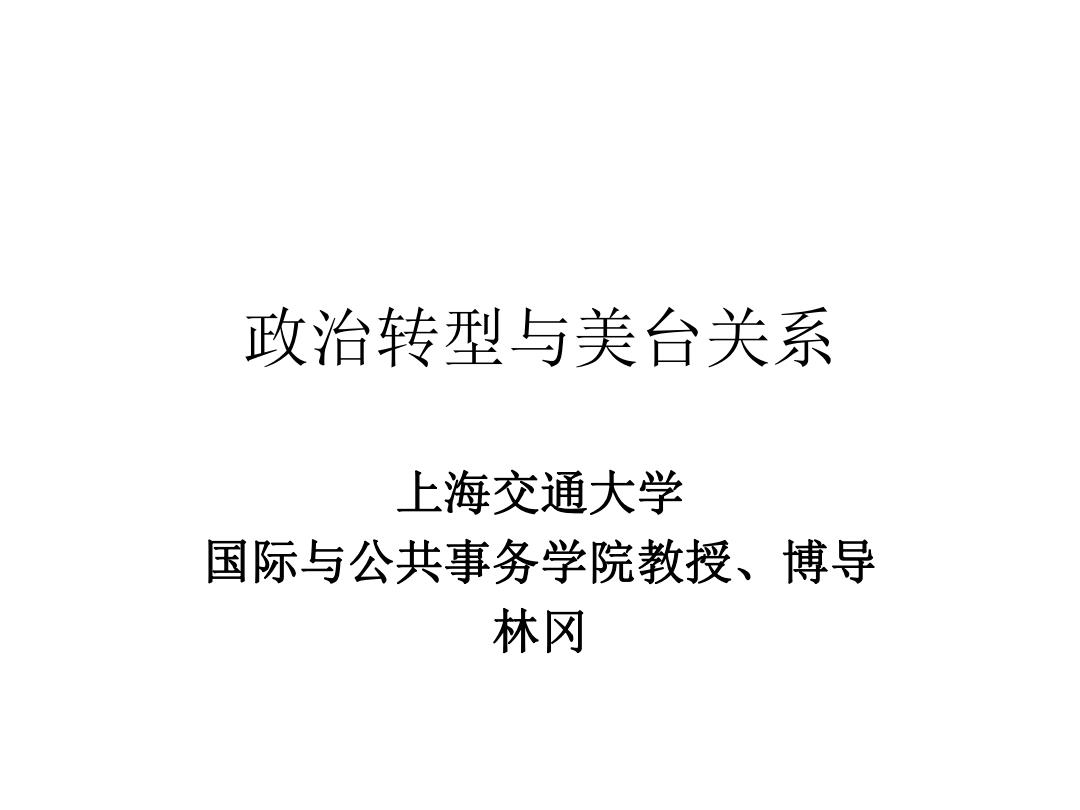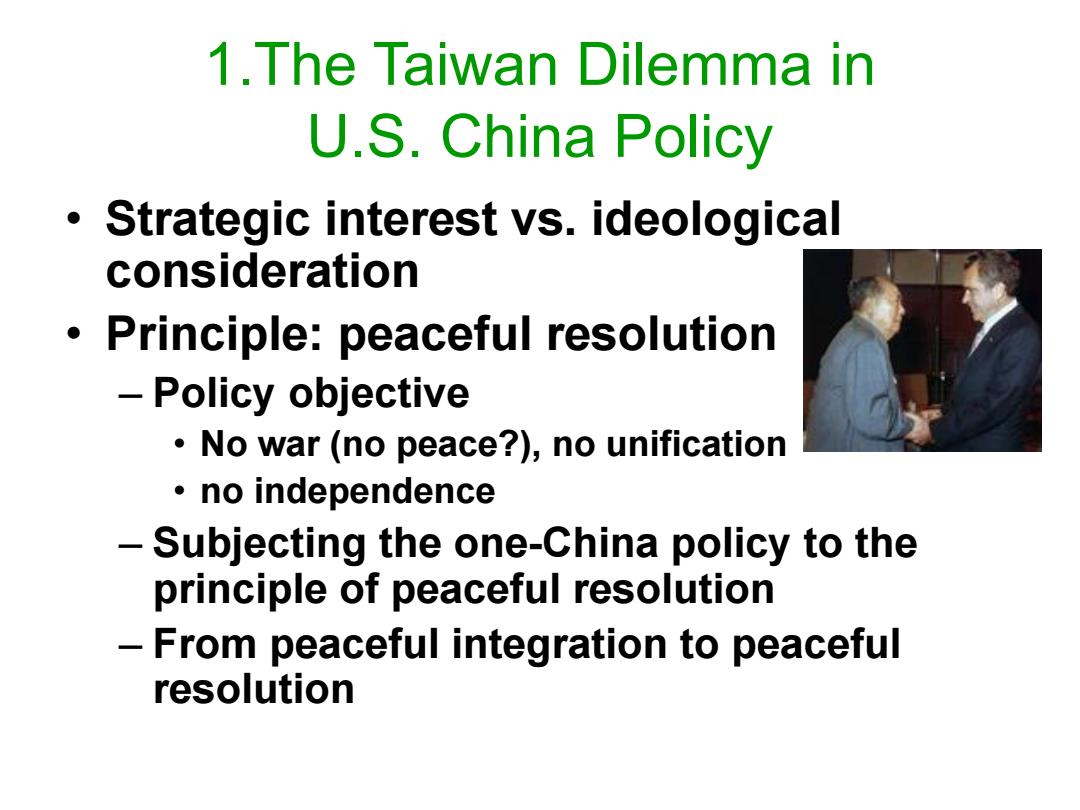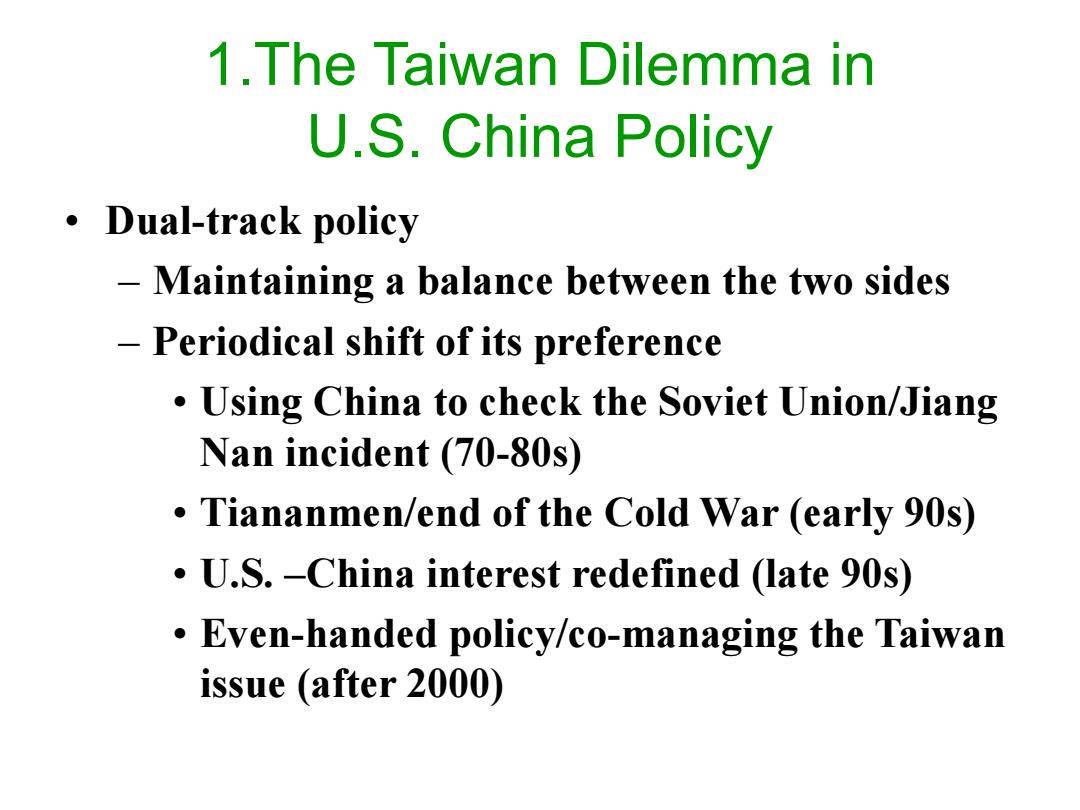
政治转型与美台关系 上海交通大学 国际与公共事务学院教授、博导 林冈
政治转型与美台关系 上海交通大学 国际与公共事务学院教授、博导 林冈

☐Mainland 口Taipei ■US

Beijing,Taipei,and Washington U.S.Policy Objective Peaceful separation No unification and no independence Peaceful Radical TI Status unification Peaceful Unificaiton quo development by force Taibei's Policy Beijing's Policy
Beijing, Taipei, and Washington Radical TI Peaceful unification Peaceful separation Beijing’s Policy Unificaiton by force Status quo No unification and no independence Peaceful development Taibei’s Policy U.S. Policy Objective

1.The Taiwan Dilemma in U.S.China Policy o Strategic interest vs.ideological consideration Principle:peaceful resolution Policy objective No war(no peace?),no unification ·no independence Subjecting the one-China policy to the principle of peaceful resolution From peaceful integration to peaceful resolution
1.The Taiwan Dilemma in U.S. China Policy • Strategic interest vs. ideological consideration • Principle: peaceful resolution – Policy objective • No war (no peace?), no unification • no independence – Subjecting the one-China policy to the principle of peaceful resolution – From peaceful integration to peaceful resolution

1.The Taiwan Dilemma in U.S.China Policy ·Dua-track policy Maintaining a balance between the two sides -Periodical shift of its preference Using China to check the Soviet Union/Jiang Nan incident (70-80s) Tiananmen/end of the Cold War (early 90s) U.S.-China interest redefined (late 90s) Even-handed policy/co-managing the Taiwan issue (after 2000)
1.The Taiwan Dilemma in U.S. China Policy • Dual-track policy – Maintaining a balance between the two sides – Periodical shift of its preference • Using China to check the Soviet Union/Jiang Nan incident (70-80s) • Tiananmen/end of the Cold War (early 90s) • U.S. –China interest redefined (late 90s) • Even-handed policy/co-managing the Taiwan issue (after 2000)